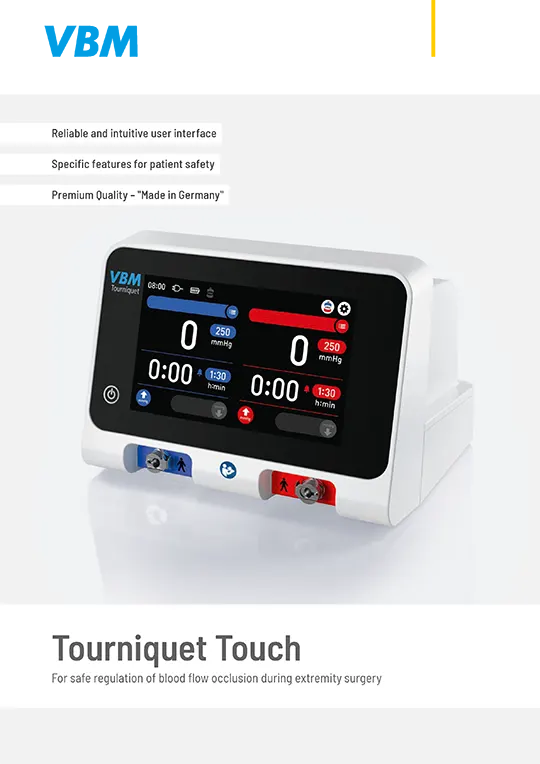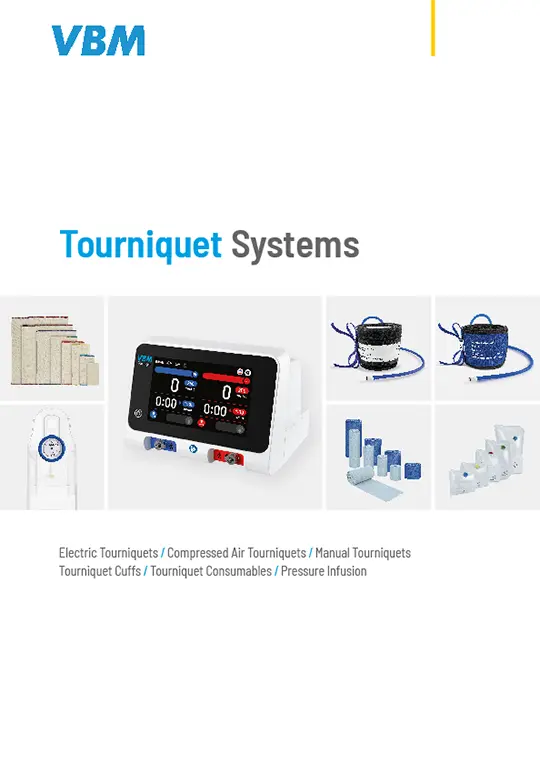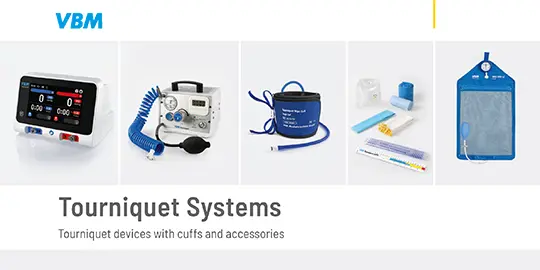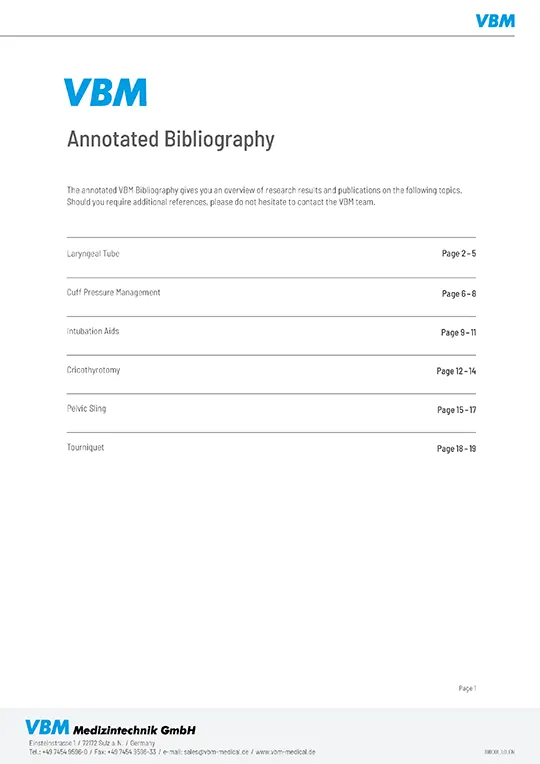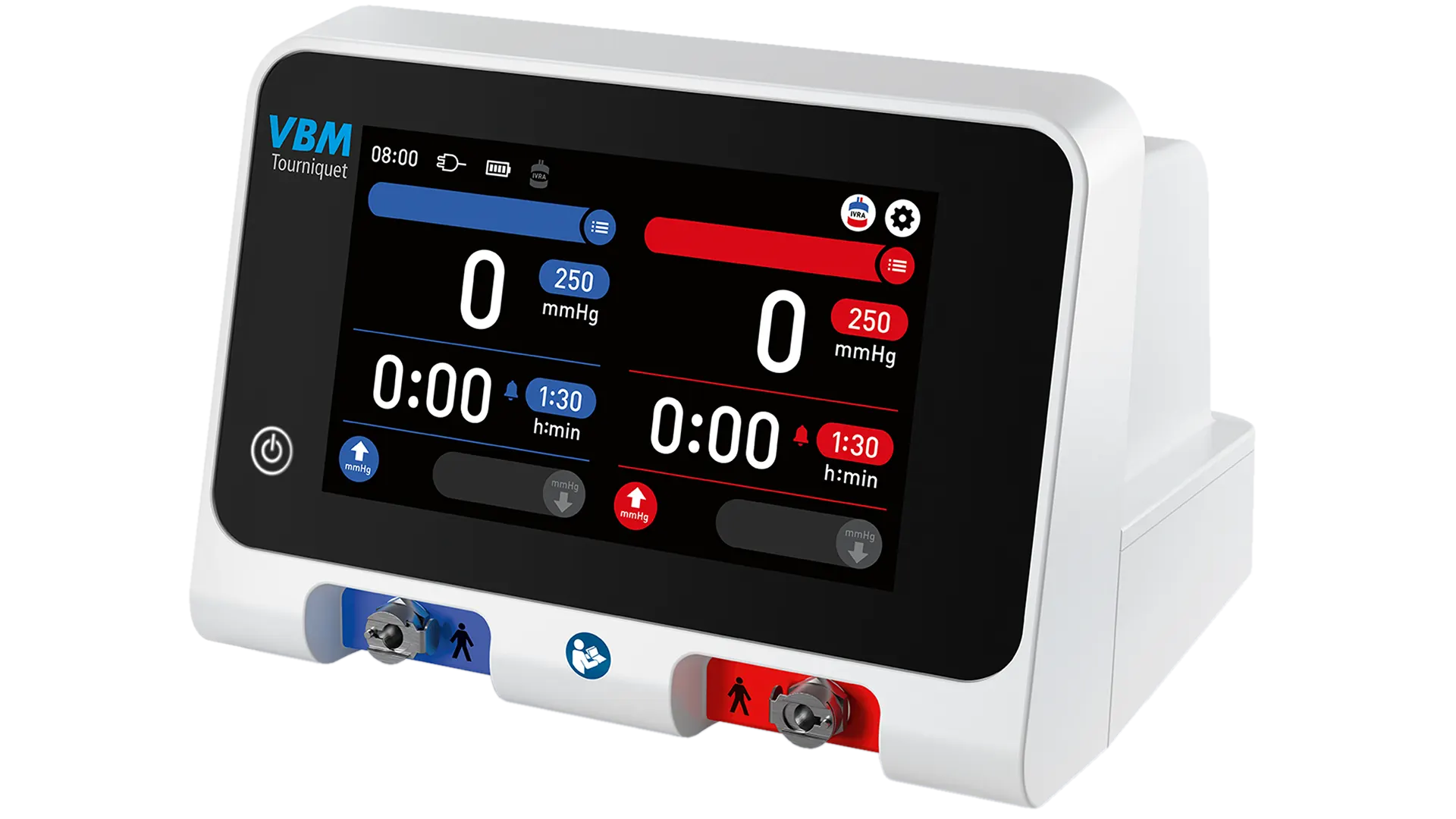
Tourniquet Touch
For safe regulation of blood flow occlusion during extremity surgery
Reliable and intuitive user interface
Specific features for patient safety
Premium Quality – "Made in Germany"

The Tourniquet Touch is an electrically operated surgical tourniquet. It regulates the pressure of a Tourniquet Cuff which temporarily occludes the blood flow of a patient's upper or lower extremity in order to obtain a bloodless field. User friendly innovations such as Fast Choice Buttons and the specific alarm system simplify the use of the device and ensure patient safety. The system interface is reliable and intuitive and allows easy maintenance for the biomedical engineer (calibration, self test, leak test).
——Products
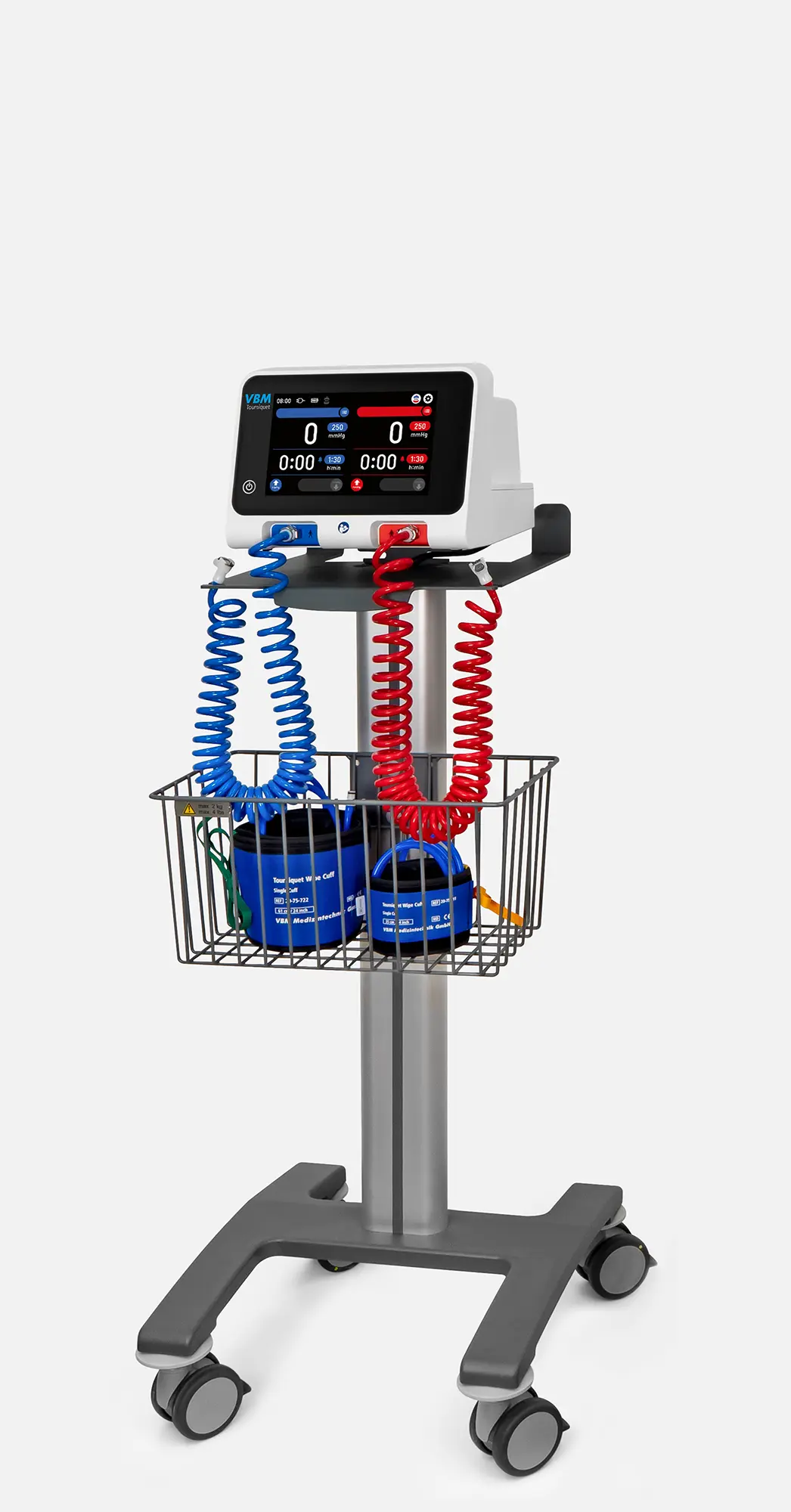
Tourniquet Touch TT20 with two cuff channels
For use with Single Cuff, two Single Cuffs or Double Cuff.
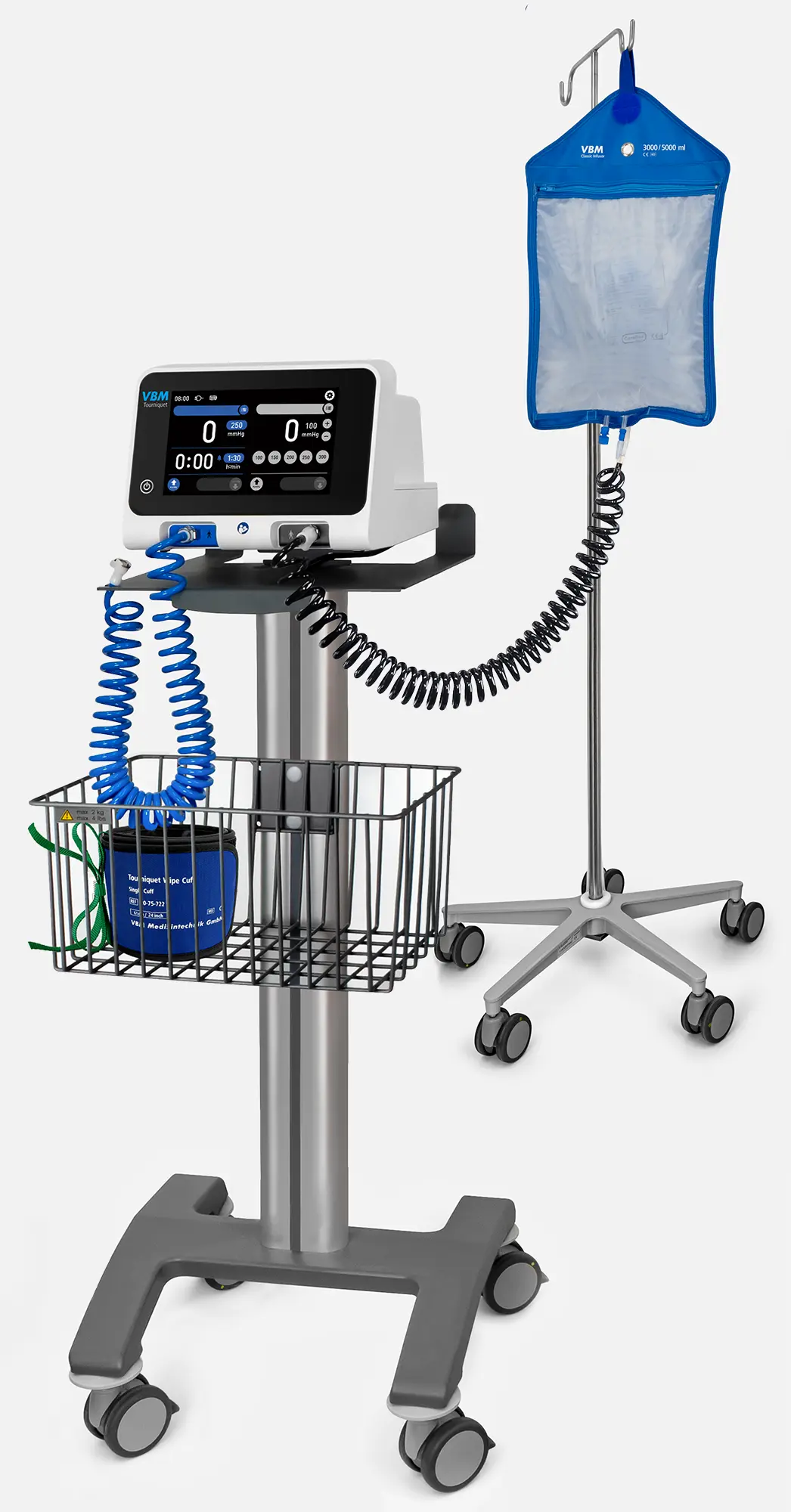
Tourniquet Touch TT15 with cuff channel and irrigation channel
For use with Single Cuff and Pressure Infusion Cuff.
——Specifications
Display
- 8 inch (800 x 480 pixel)
- Wide viewing angle (170°)
- Low reflection, mat, anti-glare
Touch Screen
- 100% premium glass
- Easy cleaning and disinfection
- Usable with surgical gloves
Settings
- Defaults allow personalised presetting of time and pressure
- Easy maintenance (calibration, self test, leak test)
Battery
- Lithium ion (14.4 V – 93.6 Wh)
- Approx. 8 h backup runtime
Cuff Channel
- Pressure range: 80 – 500 mmHg
- Alarm time: 15 – 120 minutes
Irrigation Channel (TT15)
- Pressure range: 50 – 300 mmHg
USB-Port
- Software updates
- Saving log file for device analysis
Housing
- With integrated handle
- Very robust material
- Easy cleaning and disinfection
Weight / Dimensions / Supply Voltage
- 4.5 kg
- Height 186 mm, width 263 mm, depth 226 mm
- Supply voltage 100 – 240 VAC
——Features
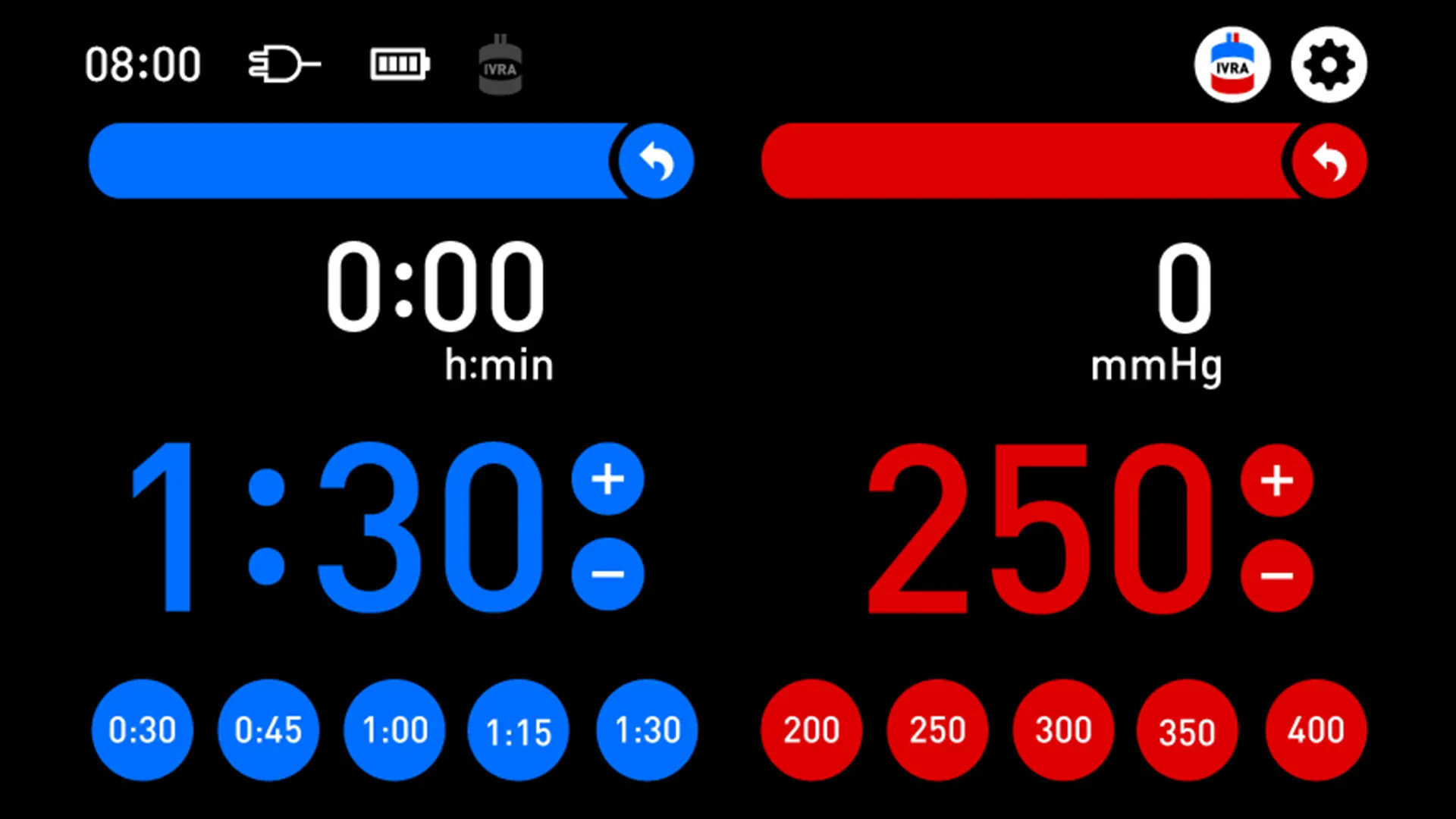
Fast Choice Buttons
- Allow to change pressure and time of preset values with only two touches
- No need to tap arrows and confirmation buttons
- Facilitate immediate pressure changes during surgical procedures
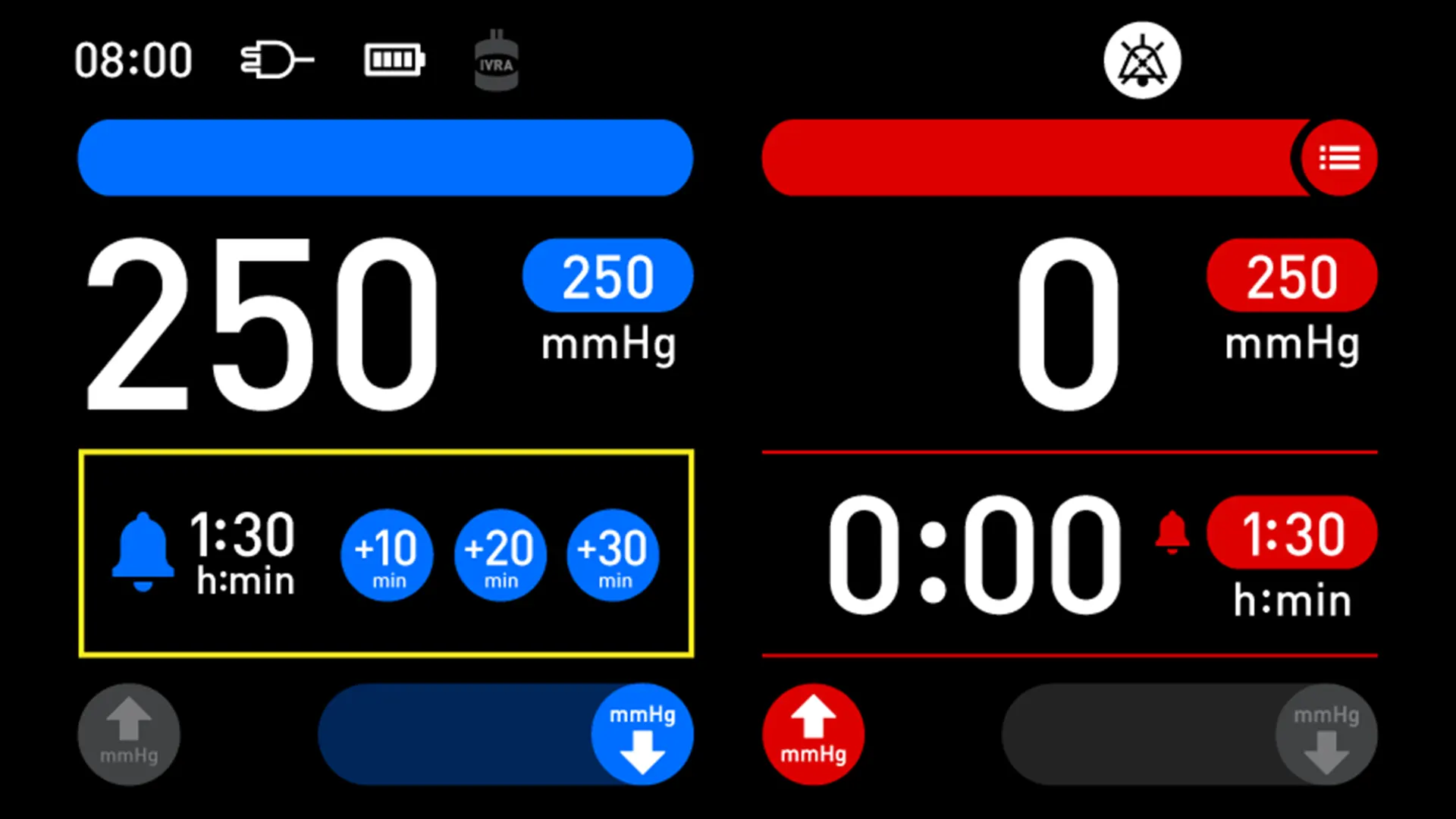
Timer Alarm
- Precise time monitoring during the procedure
- User is warned after reaching the set alarm time
- Extension of alarm time by 10, 20 or 30 minutes
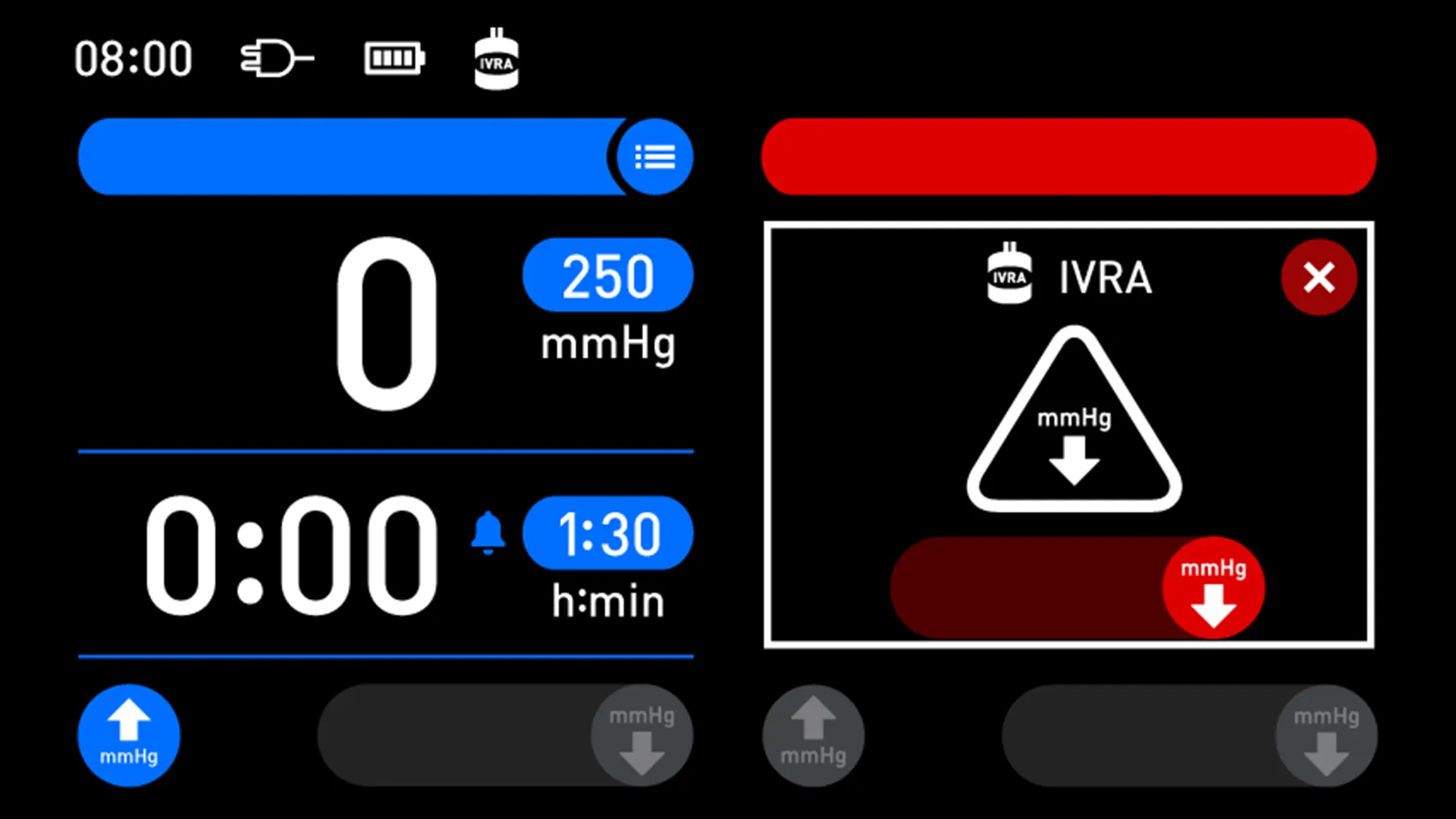
TT20: Intravenous Regional Anaesthesia (IVRA)
- Safety lockout to reduce the risk of accidental cuff deflation and to prevent a sudden loss of IVRA
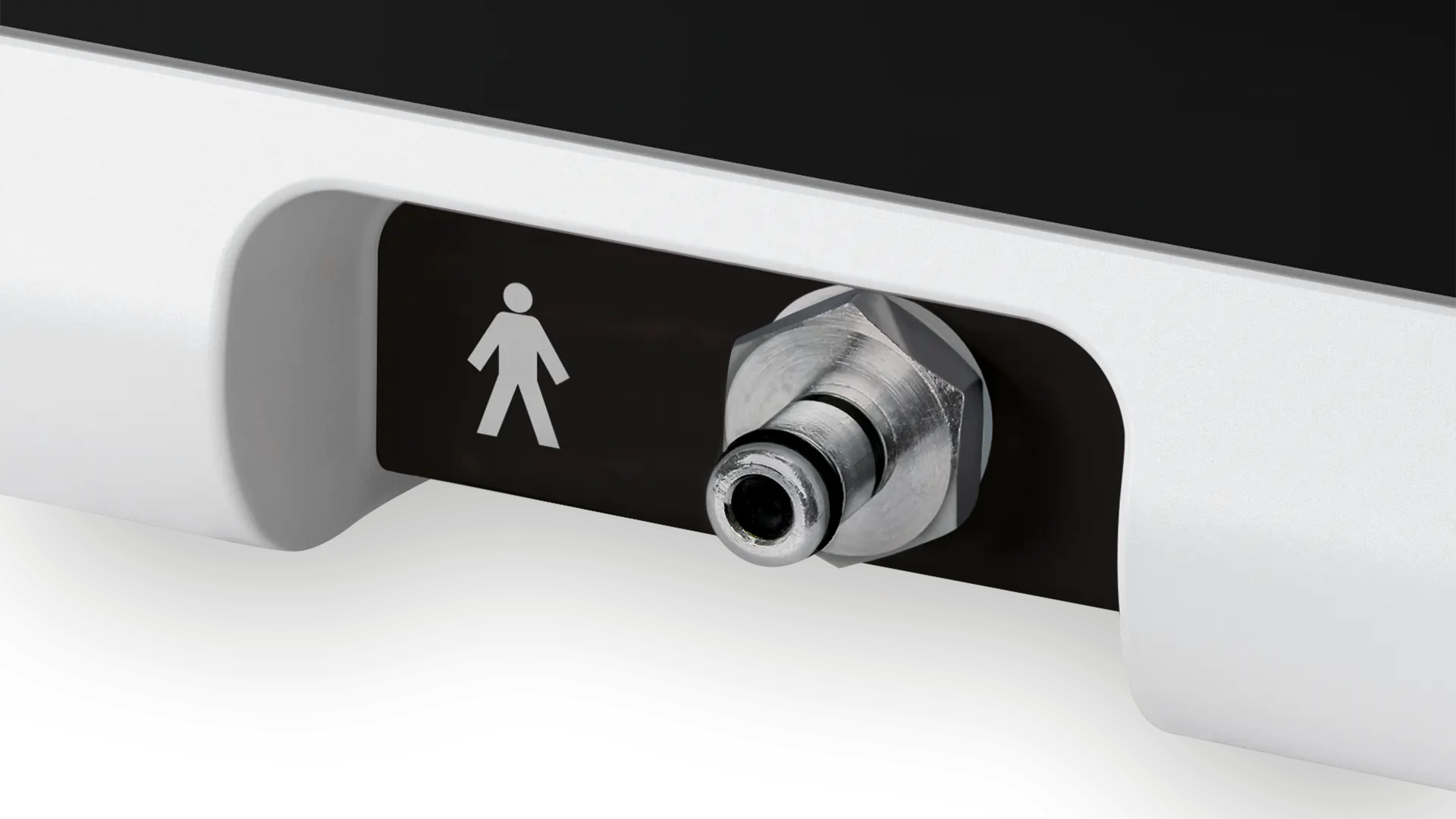
TT15: Connection Irrigation Channel
- Irrigation port with dedicated connector for Pressure Infusion Cuff to avoid misconnection of Tourniquet Cuffs
- Pressure is monitored and adjusted constantly to compensate loss of pressure caused by emptying of the fluid bag
——Accessories for Tourniquet Touch
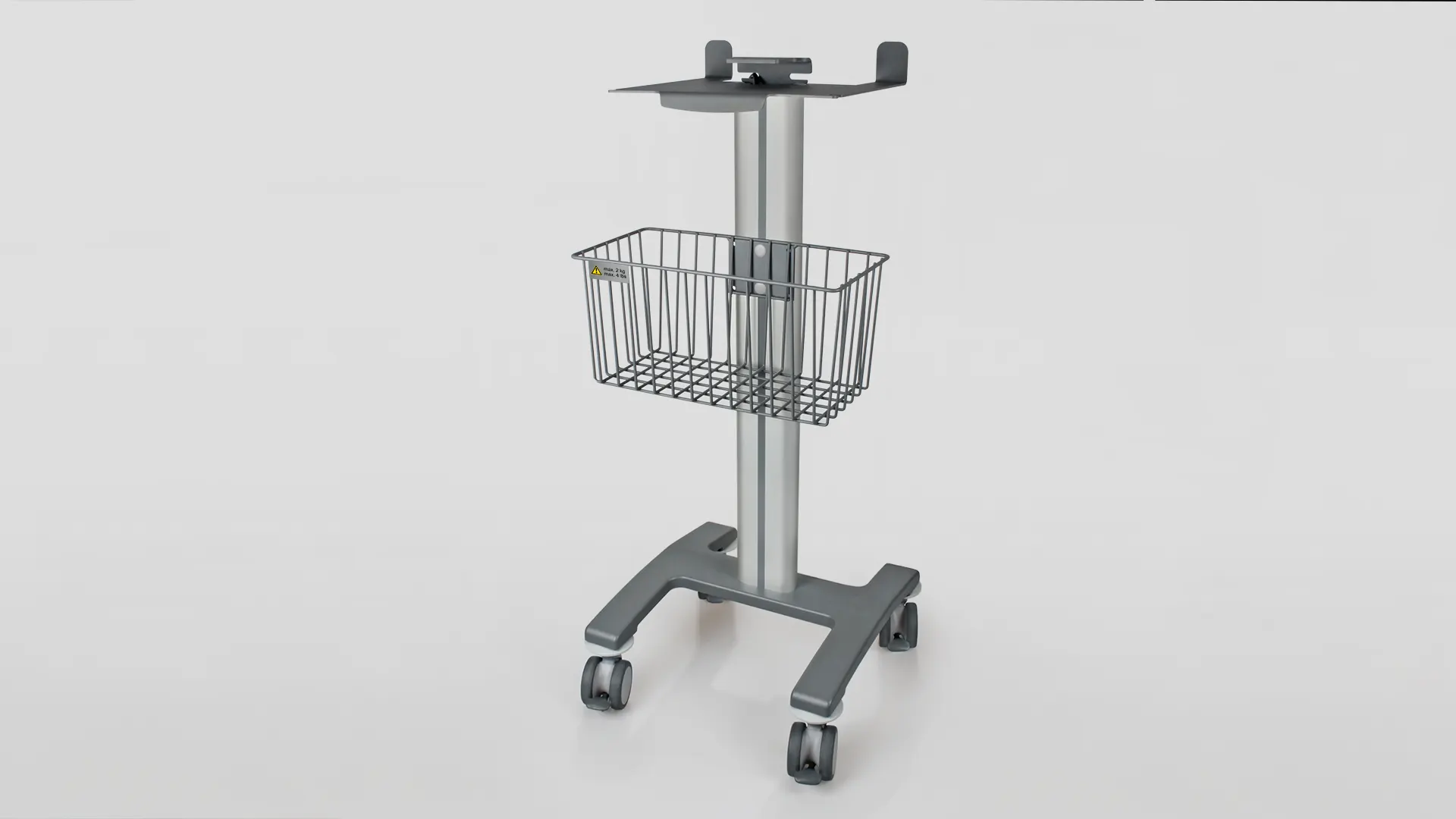
Mobile Stand with Basket
- Handle for easy manoeuvring
- Cable hanger for placement of cable during transport
- Tubing hanger for placement of connecting tubing during transport
- Cable conduit inside the column of the stand for strain-relief and proper conduit of the cable
- Basket of 2 kg load capacity
- 4 castors with castor lock (2 include ESD)
- Dimensions: Height 939 mm, width 400 mm, depth 400 mm
- Weight: 8.2 kg
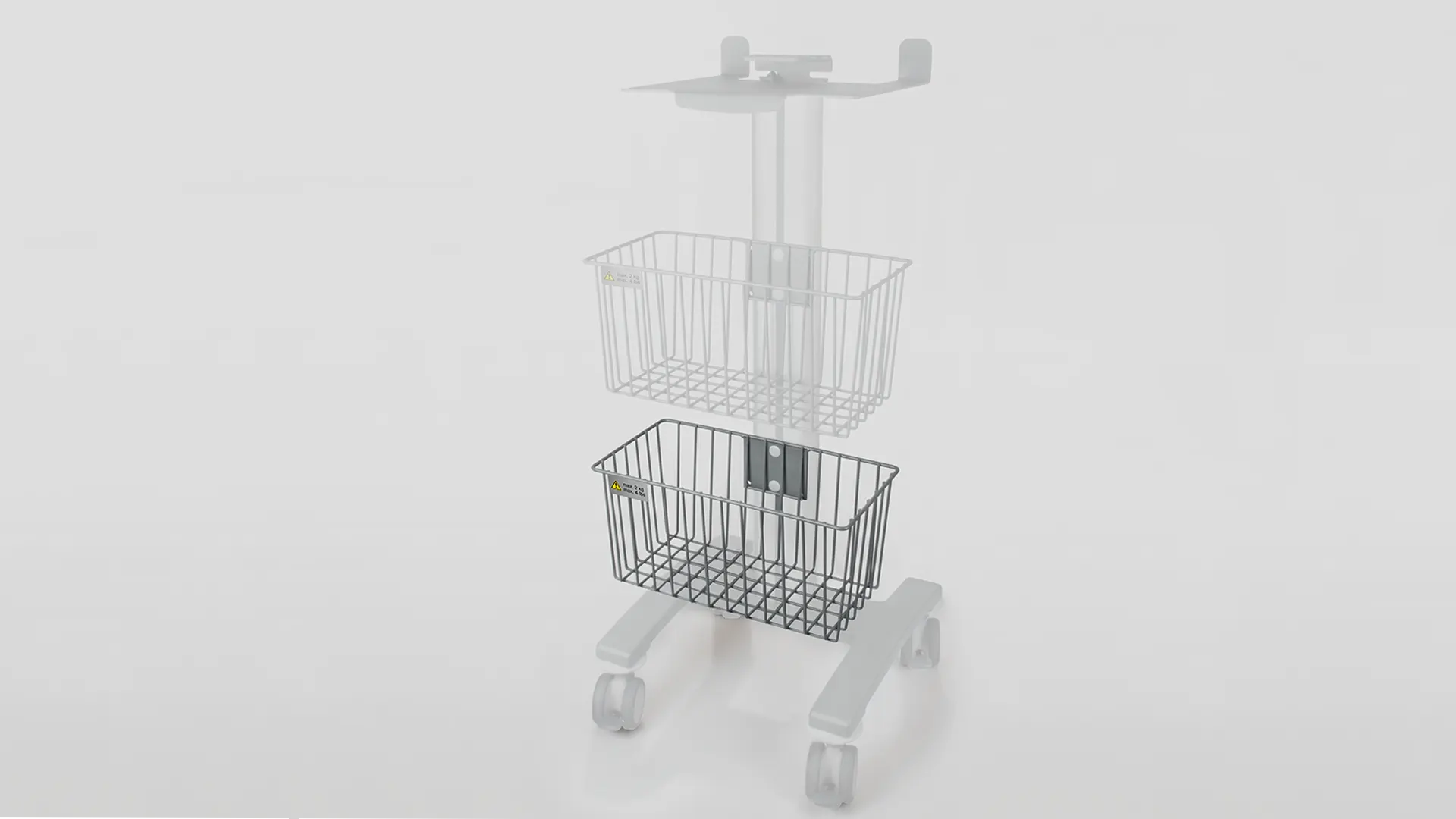
Basket
- Possibility of attaching a second basket
- Dimensions: Height 185 mm, width 377 mm, depth 196 mm
- Weight: 0.73 kg
——Spare Parts for Tourniquet Touch
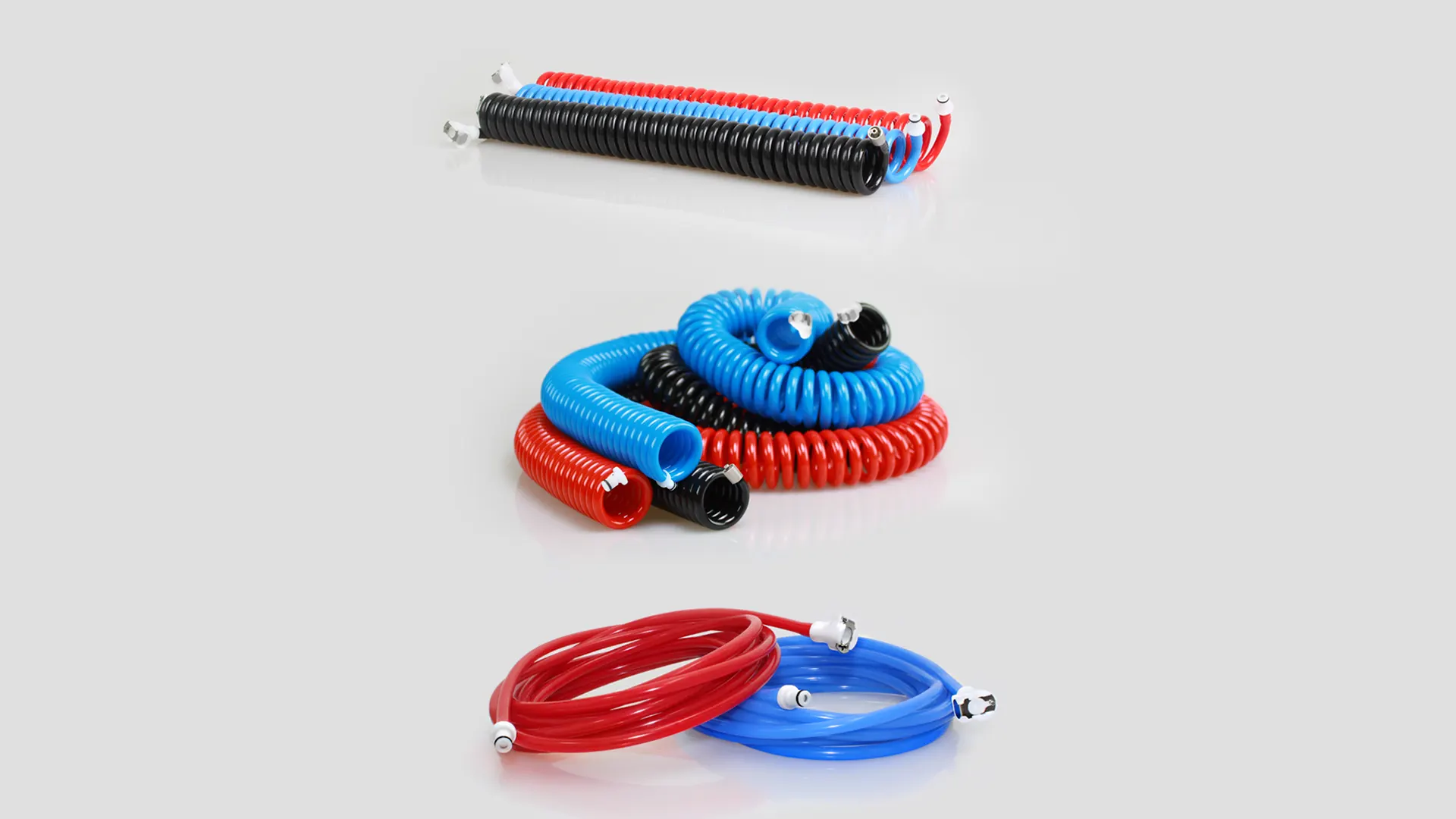
Connecting Tubing
- Coil Connecting Tubing, blue/red, streched length 3.0 m / 6.0 m, Material: Polyurethane
- Smooth Connecting Tubing, blue/red 4.5 m, Material: Silicone
X
For Irrigation Channel (TT15)
- Coil Connecting Tubing, black, streched length 3.0 m / 6.0 m, Material: Polyurethane
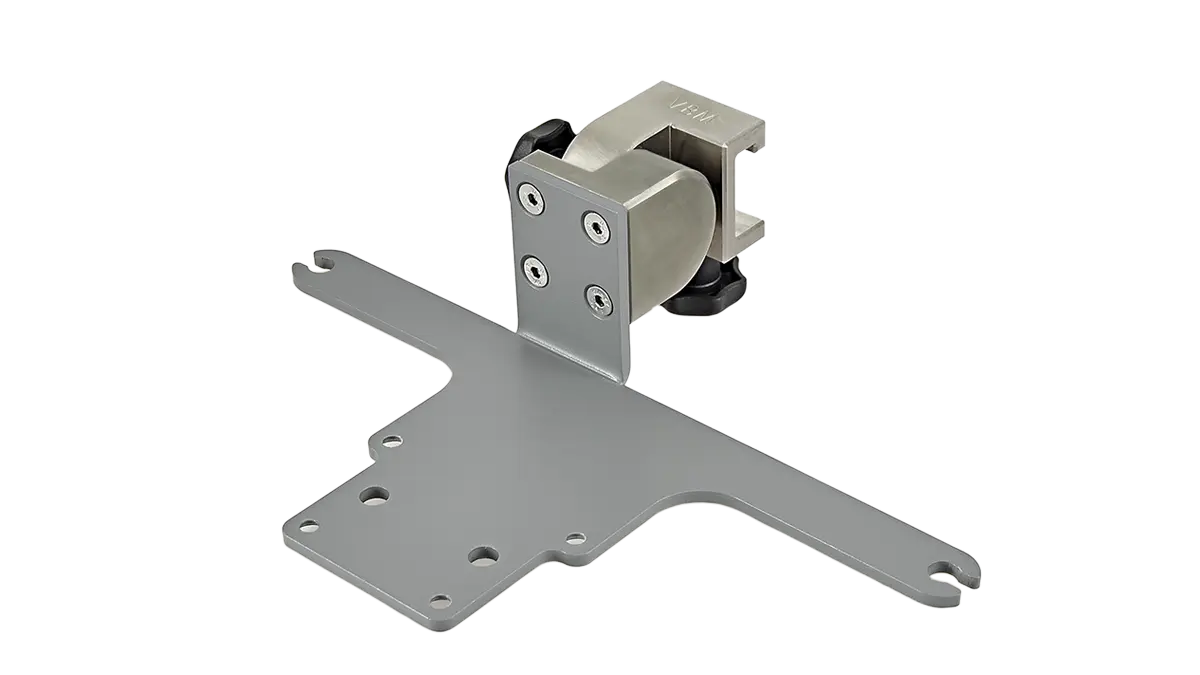
Clamp
- With tray for horizontal standard rail
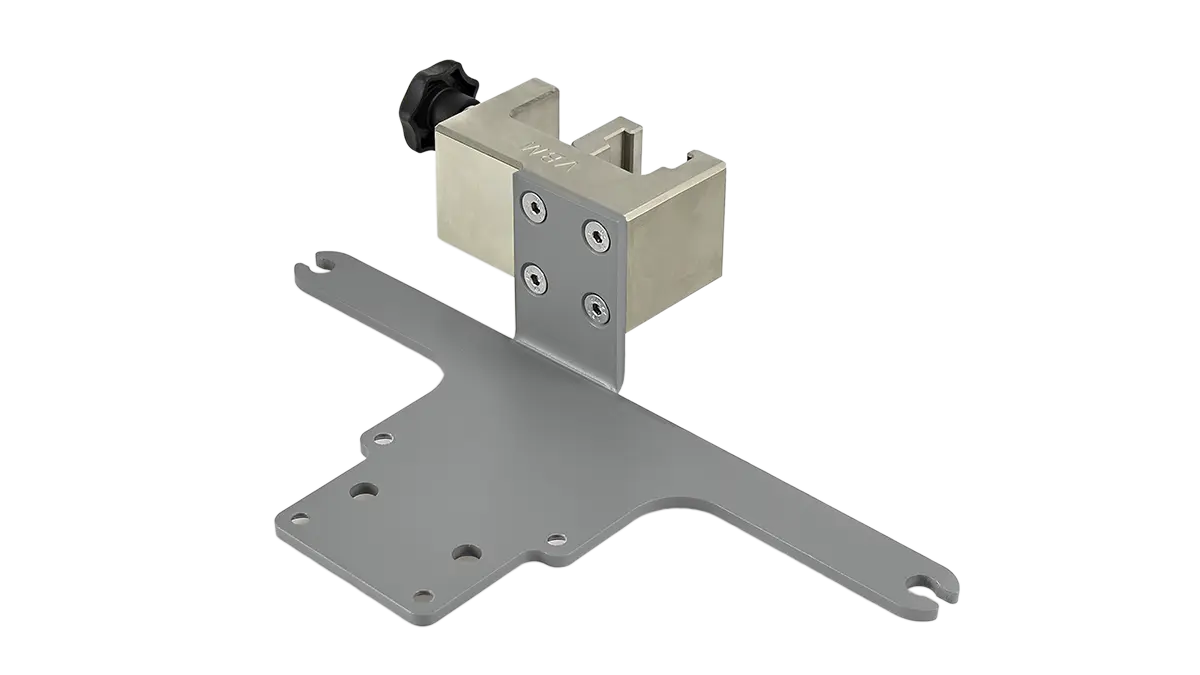
Clamp
- With tray for vertical pole
——Application Video
——Additional Information
——Frequently Asked Questions (FAQ)
What versions of the Tourniquet Touch are available?
The TT exists in 2 different configurations: The TT15 with cuff and irrigation channel and the TT20 with two cuff channels including the option of IVRA.
What are the recommendations for Service and Maintenance?
An inspection has to be performed once a year by a biomedical engineer. The inspection includes calibration, a self-test and a leak test. This can be performed through the device settings via the two options “Calibration” and “System check”.
Does VBM offer product training or training videos?
We are offering product training either at our premises, online or on your site upon request. Training videos are available on our website www.vbm-medical.de
What is the pressure range of the TT?
The pressure of the cuff channel can be set in a range between 80 and 500 mmHg. The TT15 has an additional irrigation channel with a range between 50-300 mmHg.
Which alarm time can be set?
The alarm time can be set in a range between 15 and 120 minutes.
What exactly are the so called “Fast-Choice-Buttons”?
“Fast-Choice-Buttons” allow a quick selection of pressure and alarm time thanks to preset values. Between 200-400 mmHg for pressure and between 30-90 minutes for alarm time. “Fast-Choice-Buttons” can be used at any time of the procedure.
Is it possible to extend the time after the alarm?
Yes, the time can be repeatedly extended by 10, 20 or 30 minutes.
Can the factory settings for pressure (250 mmHg) and time (90 min) be changed?
Yes, it is possible to change the default values for pressure and time according to the requirements of the user. It is necessary to close the settings menu and restart the device after changing the values.
Is there an interface for a printer?
No, a printer cannot be connected to the device but you can check time and pressure of the last 5 sessions by clicking the history button.
What is the purpose of the USB-port?
With help of the USB-port it is possible for the manufacturer to read-out error codes. Furthermore it is an interface for software updates performed by the manufacturer.
Is it possible to operate the device with surgical gloves?
Yes, it is possible to operate the TT either with or without surgical gloves.
How long is the start-up time, including the self-test?
The start-up including the self-test takes approximately 30 seconds.
What is performed during the self-test?
The self-test checks parameters such as internal security features, voltage and device temperature, the supply of compressed air at the two channels, storage media, battery, soft- and hardware versions and the alarm systems.
What is the IP code of the TT?
IP code of the TT is IP20 and therefore not waterproof due to its venting slots at the back of the Tourniquet which ensure appropriate airflow and prevent the battery from overheating. However, wipe disinfection of the housing is easily possible and not damaging the TT.
How can the device be disinfected?
The Tourniquet Touch can be disinfected through a common wipe disinfection.
Which accessories are available?
- Robust mobile stand with basket, exclusively designed for the Tourniquet Touch
- Additional basket to increase storage place
- Coiled and smooth connecting tubing in different lengths
Which are the languages included in the TT?
The TT has been designed with enhanced user-friendliness and shall be mostly operated without a certain language. However for the settings menu, various languages can be selected. These languages are as follows: English, German, French, Spanish, Italian, Portuguese, Dutch, Swedish, Norwegian, Finnish, Danish, Czech, Polish, Turkish.
Does the TT fulfill the IEC 60601-1-2 Standard?
Yes, the TT fulfills the IEC 60601-1-2 Standard. Within this Standard EMC immunity and emission are tested by an accredited test laboratory (see IFU).
Does the TT interfere with electrosurgical units?
Yes, If the TT is in the proximity of a high-frequency surgical unit or a high-frequency shielded room, this may cause the TT to malfunction.
What can be done to avoid the interference?
1. Increase the distance between the TT and the HF surgical equipment including the cable.
2. The cable of the monopolar electrode and the neutral electrode of an HF surgical unit must be guided parallel and close to each other to the patient.
What is the autonomy with a fully loaded battery?
Without power source and a fully loaded battery, it is possible to run the device during approximately 8 hours.
What does it mean when the On/Off-Button flashes when pressed?
It means, that the battery is very low and needs to be charged. The device is equipped with a Lithium ion battery whose charging process is controlled by a battery management system. The charging process is performed depending on the temperature and the state of charge to increase the shelf life of the battery. This means the charging time can significantly vary.
How to ensure a long battery shelf life and to avoid damage to the battery?
If the device is not used and it has not been connected to the power supply, it must be recharged every 5 months. This prevents deep discharge of the battery. Do not switch on the device during charging.
What is LOP (Limb Occlusion Pressure)?
LOP is the minimum pressure required to stop the flow of arterial blood into the limb distal to the pneumatic tourniquet cuff.
What is the LOP determination method with the TT?
The tourniquet cuff is placed around the extremity with a snug fit. To determine the LOP, a pulse oximetry probe is applied to the toe or index finger at the side of the operation and the cuff is inflated slowly (by steps of 10 mmHg) until the arterial pulsations disappeared on the monitor. This pressure is recorded as LOP.
Do I need to proceed with exsanguination prior to determine LOP?
No, exsanguination of the limb is not requested prior to LOP determination. After LOP recording, the cuff is deflated and the procedure with exsanguination can start.
How do I set the operative tourniquet pressure based on LOP?
Following exsanguination of the limb with an Esmarch bandage, the tourniquet cuff is inflated to the operative tourniquet pressure:
Operative tourniquet pressure = LOP + safety margin
According to the guidelines of the Association of Perioperative Registered Nurses (AORN) the following safety margin is recommended:
If LOP ˂130mmHg, add 40mmHg safety margin
If LOP 130 – 190mmHg, add 60 mmHg safety margin
If LOP ˃190mmHg, add 80mmHg safety margin
What is AOP (Arterial Occlusion Pressure)?
It is a synonym to LOP according to the guidelines of the Association of Perioperative Registered Nurses (AORN).
Where is the TT manufactured?
The TT is manufactured at VBM headquarters in Sulz, Germany.
——Related Topics & Products
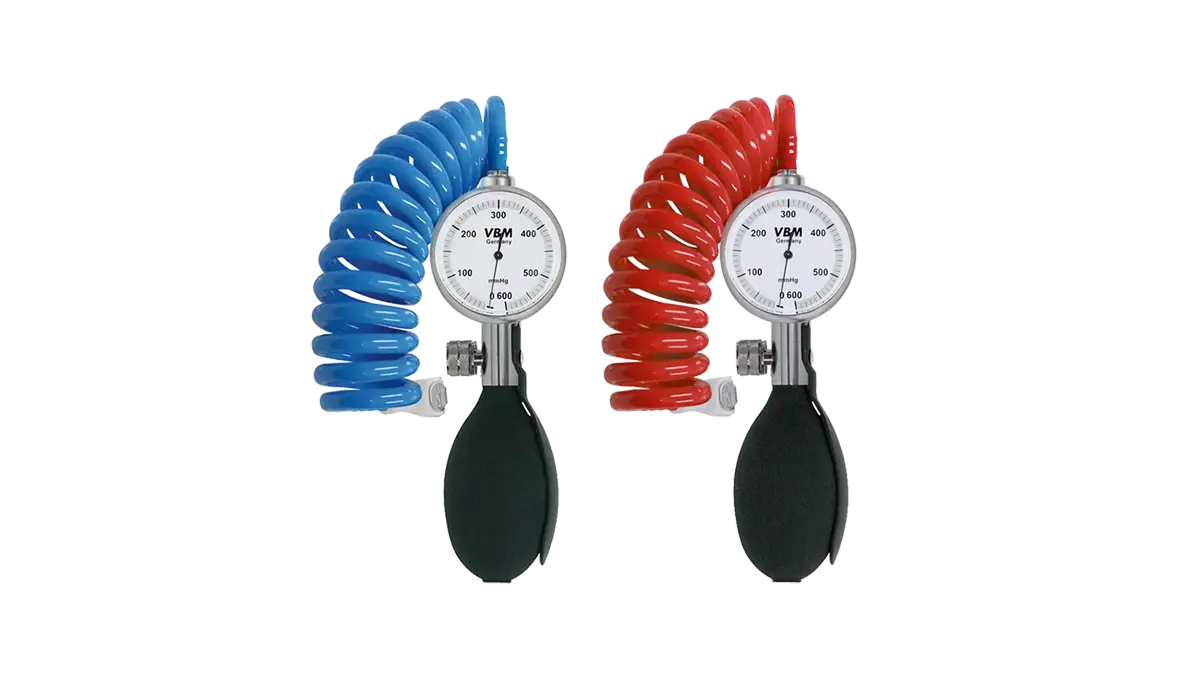
Manual Tourniquet
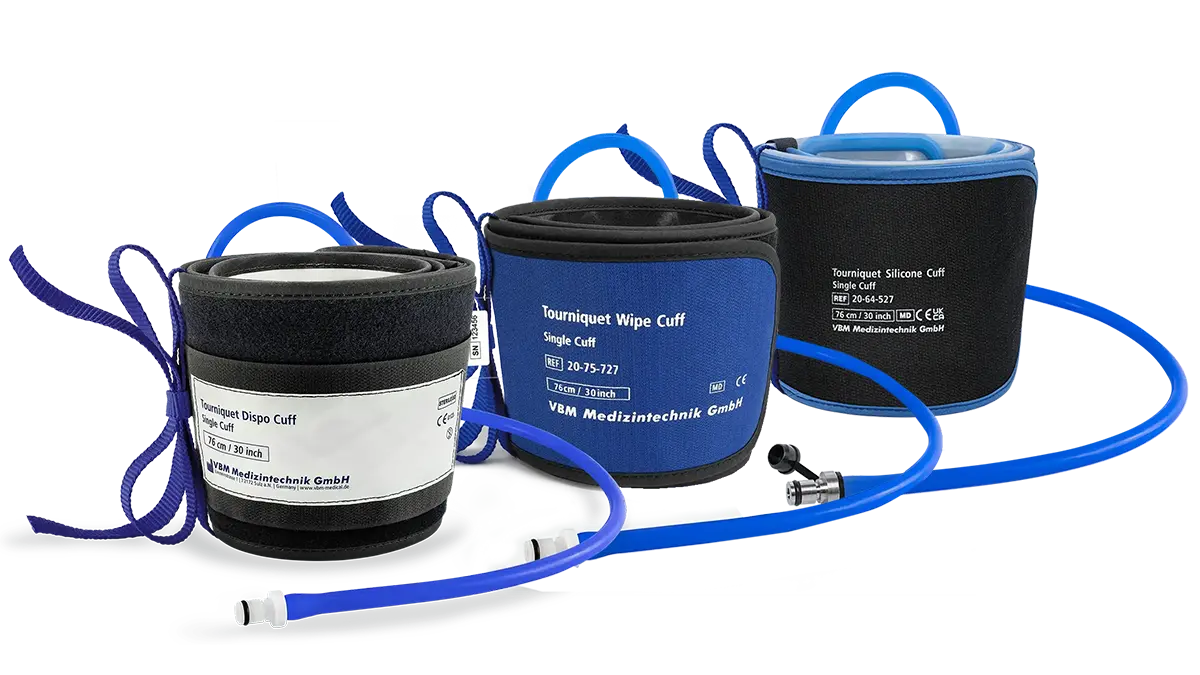
Tourniquet Cuffs
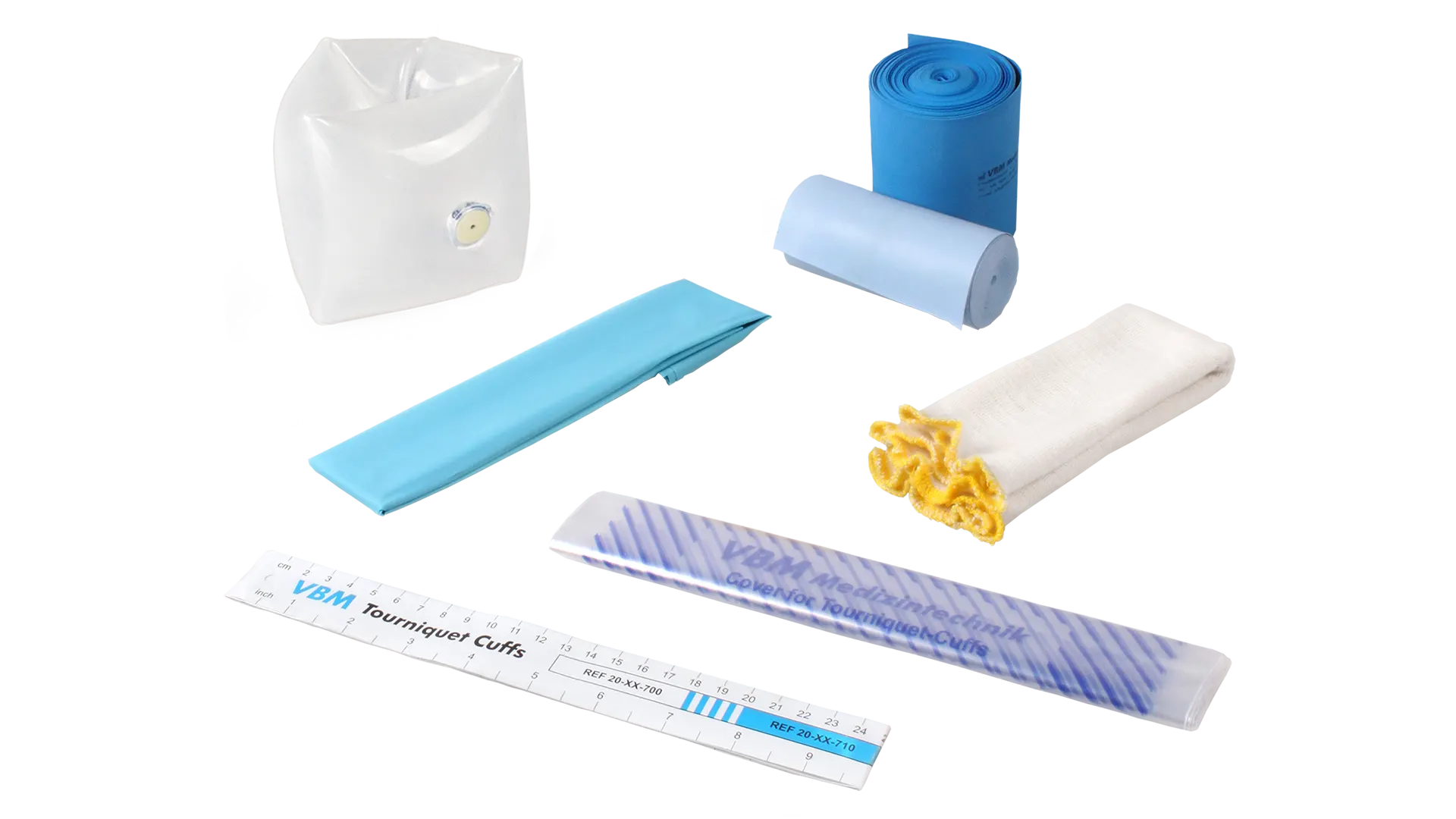
Tourniquet Consumables
WEB001_PID-03-01-01_AC_EN

